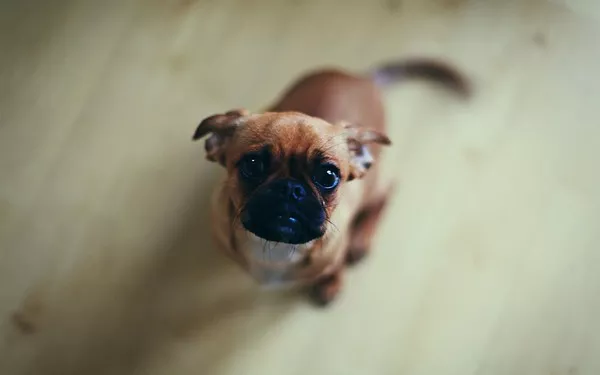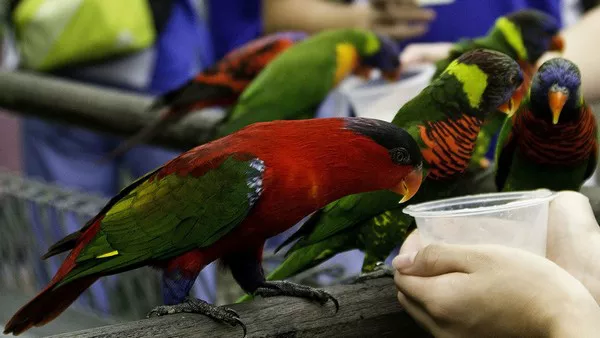Basset Hounds are beloved for their adorable droopy ears, soulful expressions, and an amiable nature that endears them to families worldwide. Despite their friendly demeanor, many people overlook the potential of these dogs to become effective protectors. With the right approach, Basset Hounds can be trained to serve as loyal guardians while retaining their playful and gentle characteristics. In this comprehensive guide, we will explore effective strategies to train your Basset Hound for protection, enriching your relationship and enhancing your dog’s abilities.
Understanding the Basset Hound
Before diving into training techniques, it’s crucial to understand the Basset Hound‘s temperament and characteristics. Originating from France, Basset Hounds were initially bred for hunting, specifically to track small game like rabbits. Their short legs and long bodies allow them to navigate through dense underbrush while their keen sense of smell makes them excellent scent hounds.
Key Traits of Basset Hounds
Gentle and Friendly: Basset Hounds are known for their friendly disposition. They typically get along well with children and other pets, making them ideal family dogs.
Intelligent yet Stubborn: These dogs are intelligent but can exhibit a stubborn streak, often leading them to challenge commands. Patience and consistency are key during training.
Loyal and Affectionate: Basset Hounds form strong bonds with their families. They are loyal companions, always eager to please their owners.
Vigilant Watchdogs: Despite their friendly nature, Basset Hounds possess a natural instinct to protect their home and family. They will alert you to unfamiliar sounds or visitors.
The Importance of Training for Protection
Training your Basset Hound to protect serves multiple purposes. It not only equips them with the skills to act as a guardian but also fosters discipline and mental stimulation. Protection training enhances the bond between you and your dog while ensuring they understand their role within the family structure.
Benefits of Protection Training
Enhanced Confidence: A well-trained dog exudes confidence, which can deter potential intruders.
Improved Behavior: Training encourages good behavior and obedience, making your dog more manageable in various situations.
Strengthened Bond: Working together in training sessions builds a strong, trusting relationship between you and your Basset Hound.
Increased Awareness: Training sharpens your dog’s instincts and awareness, making them more alert to their surroundings.
Getting Started: Preparing for Training
Before you start training your Basset Hound for protection, consider the following preparations to ensure a successful experience:
1. Create a Safe Environment
Establish a designated training area free from distractions. This could be a quiet room in your home or a secure outdoor space. Ensure the area is safe and comfortable for your dog.
2. Gather Training Supplies
Having the right tools at hand will facilitate the training process. Essential supplies may include:
Leash and Collar: A sturdy leash and collar for control during training sessions.
Treats: High-value treats will motivate your dog and reward good behavior.
Clicker: A clicker can help mark desired behaviors during training.
Toys: Interactive toys can keep your dog engaged and reinforce positive behavior.
3. Establish a Training Routine
Consistency is key in training. Create a structured routine that includes regular training sessions, exercise, and playtime. This routine will help your Basset Hound understand expectations and develop good habits.
4. Know Your Dog’s Limits
Basset Hounds are not typically aggressive. Understanding your dog’s limits and instincts is crucial. They can serve as excellent watchdogs but may not have the temperament for aggressive protection. Focus on training them to alert you rather than to attack.
Basic Obedience Training
Before diving into protection-specific training, ensure your Basset Hound has a solid foundation in basic obedience commands. These commands will be vital for effective protection training.
Essential Commands to Teach
Sit: A fundamental command that establishes control.
Stay: Essential for keeping your dog in place when necessary.
Come: Ensures your dog returns to you when called, crucial in various situations.
Down: Helps to calm your dog and maintain composure.
Leave It: Teaches your dog to ignore distractions, which can be helpful during protective scenarios.
Training Tips for Basic Commands
Use Positive Reinforcement: Reward your Basset Hound with treats, praise, or playtime when they successfully follow commands.
Keep Sessions Short: Basset Hounds can become easily distracted. Short, focused training sessions are more effective.
Practice Regularly: Consistent practice helps reinforce commands and ensures your dog retains the skills learned.
Introduction to Protection Training
Once your Basset Hound has mastered basic commands, you can begin introducing them to protection training. This phase should be approached with care, ensuring the experience remains positive.
1. Socialization
Socialization is vital for your Basset Hound’s development and ability to discern threats. Expose your dog to various environments, people, and other animals. Encourage positive interactions to build confidence and reduce fear.
2. Alerting Behavior
Teach your Basset Hound to alert you when someone approaches your home. This can be done by using a specific command, such as “Alert.”
Training Steps for Alerting Behavior
Command Introduction: Start by saying “Alert” while your dog is in a calm state.
Introduce a Trigger: Have a friend approach your home while you and your Basset Hound observe from a distance. When your dog shows interest, reward them for being attentive.
Encourage Barking: When your dog barks or shows alertness, reward them immediately. Reinforce this behavior by repeating the process.
3. Boundary Training
Boundary training teaches your Basset Hound to understand their territory. It helps them learn to distinguish between familiar and unfamiliar individuals.
Training Steps for Boundary Training
Define the Boundaries: Walk your dog around the perimeter of your yard or home, explaining the limits.
Use Commands: Use commands like “Stay” and “Come” at the boundaries to reinforce their understanding.
Reward Compliance: Whenever your Basset Hound stays within the boundaries, reward them with praise or treats.
Advanced Protection Training
As your Basset Hound becomes more comfortable with basic protection concepts, you can introduce advanced training techniques to enhance their skills.
1. Controlled Barking
Teaching controlled barking can help your Basset Hound learn to bark on command, which can be beneficial for alerting you to potential threats.
Training Steps for Controlled Barking
Choose a Command: Use a specific word like “Speak” to indicate when you want your dog to bark.
Reward Barking: When your dog barks naturally, say the command and reward them immediately.
Practice with Cues: Create situations where your dog can bark, such as having a friend knock on the door.
2. Introduction to “Stop” and “Back Off”
These commands can be crucial for protection scenarios, allowing your dog to intervene or disengage from a situation when necessary.
Training Steps for “Stop” and “Back Off”
Use a Firm Tone: When introducing these commands, use a firm but calm voice to convey authority.
Practice with Distractions: Have a friend act as a distraction, encouraging your dog to respond to the commands.
Reinforce with Treats: Reward your dog for successfully stopping or backing off on command.
3. Scenario Training
Simulating real-life situations helps your Basset Hound practice their protective instincts in a controlled environment.
Training Steps for Scenario Training
Set Up Controlled Scenarios: Invite friends to play roles such as a stranger approaching your home.
Observe Responses: Monitor how your Basset Hound reacts and provide guidance as needed.
Reward Appropriate Behavior: Praise or reward your dog for displaying alertness or following commands during the scenarios.
The Role of Exercise in Protection Training
Physical activity plays a crucial role in training your Basset Hound for protection. Regular exercise helps channel their energy, ensuring they remain focused during training sessions.
Benefits of Regular Exercise
Mental Stimulation: Engaging your dog in various activities keeps their mind sharp and enhances their training.
Reduces Anxiety: Regular exercise helps reduce stress and anxiety, allowing your dog to remain calm during training.
Strengthens Bond: Engaging in physical activities together fosters a deeper bond between you and your Basset Hound.
Recommended Activities for Basset Hounds
Daily Walks: Regular walks help burn off energy and allow your dog to explore their surroundings.
Interactive Play: Engage your dog in games like fetch or tug-of-war to stimulate both their body and mind.
Obedience Training: Incorporate training exercises into playtime, reinforcing commands in a fun, relaxed manner.
Dealing with Challenges
Training a Basset Hound for protection can come with its own set of challenges. Understanding common issues and how to address them is crucial for success.
Common Challenges in Training
Stubbornness: Basset Hounds can be stubborn, leading to resistance during training sessions.
Distractions: Their curious nature may cause them to become easily distracted by external stimuli.
Fear Responses: If not properly socialized, Basset Hounds may react fearfully to unfamiliar situations or individuals.
Tips for Overcoming Challenges
Be Patient: Training takes time. Approach each session with patience, understanding that progress may be gradual.
Consistency is Key: Regular, consistent training sessions will reinforce commands and behaviors.
Positive Reinforcement: Focus on rewarding good behavior rather than punishing mistakes. This approach fosters a positive learning environment.
Understanding the Limitations
While Basset Hounds can be trained to protect, it’s essential to understand their limitations. They are not typically aggressive and may not react in a confrontational manner.
Realistic Expectations
Watchdog Role: Basset Hounds excel as watchdogs, alerting you to potential threats rather than engaging aggressively.
Protective Instincts: Their protective instincts may be more about loyalty and alerting you to danger than actively defending you.
Social Nature: Basset Hounds are generally more social and may prefer to greet visitors rather than perceive them as threats.
The Importance of Ongoing Training
Training doesn’t stop once your Basset Hound learns the basics of protection. Ongoing training is essential to reinforce skills and maintain a strong bond.
1. Regular Refreshers
Conduct regular refresher courses to reinforce commands and skills. This practice ensures your dog remains sharp and responsive to your commands.
2. Continued Socialization
Continue to expose your Basset Hound to new environments, people, and experiences. Ongoing socialization helps maintain their confidence and adaptability.
3. Engaging Activities
Incorporate new activities and challenges into your training routine to keep your Basset Hound engaged and motivated. Consider enrolling in obedience classes or exploring agility training to provide variety.
Conclusion
Training a Basset Hound to protect your home and family can be a rewarding journey filled with bonding moments and shared experiences. While their gentle nature may lead you to doubt their protective abilities, with the right training and guidance, these adorable companions can become vigilant guardians.
The key lies in understanding your Basset Hound’s unique characteristics and tailoring your training approach to suit their temperament. With patience, consistency, and positive reinforcement, you can help your Basset Hound embrace their protective instincts while remaining the affectionate family member they were born to be.
As you embark on this training adventure, remember that the journey is just as important as the destination. Every training session is an opportunity to strengthen your bond, teach valuable skills, and foster a loving relationship with your loyal Basset Hound. In the end, it’s not just about protection; it’s about creating a partnership built on trust, respect, and love.
Related Topics:

























